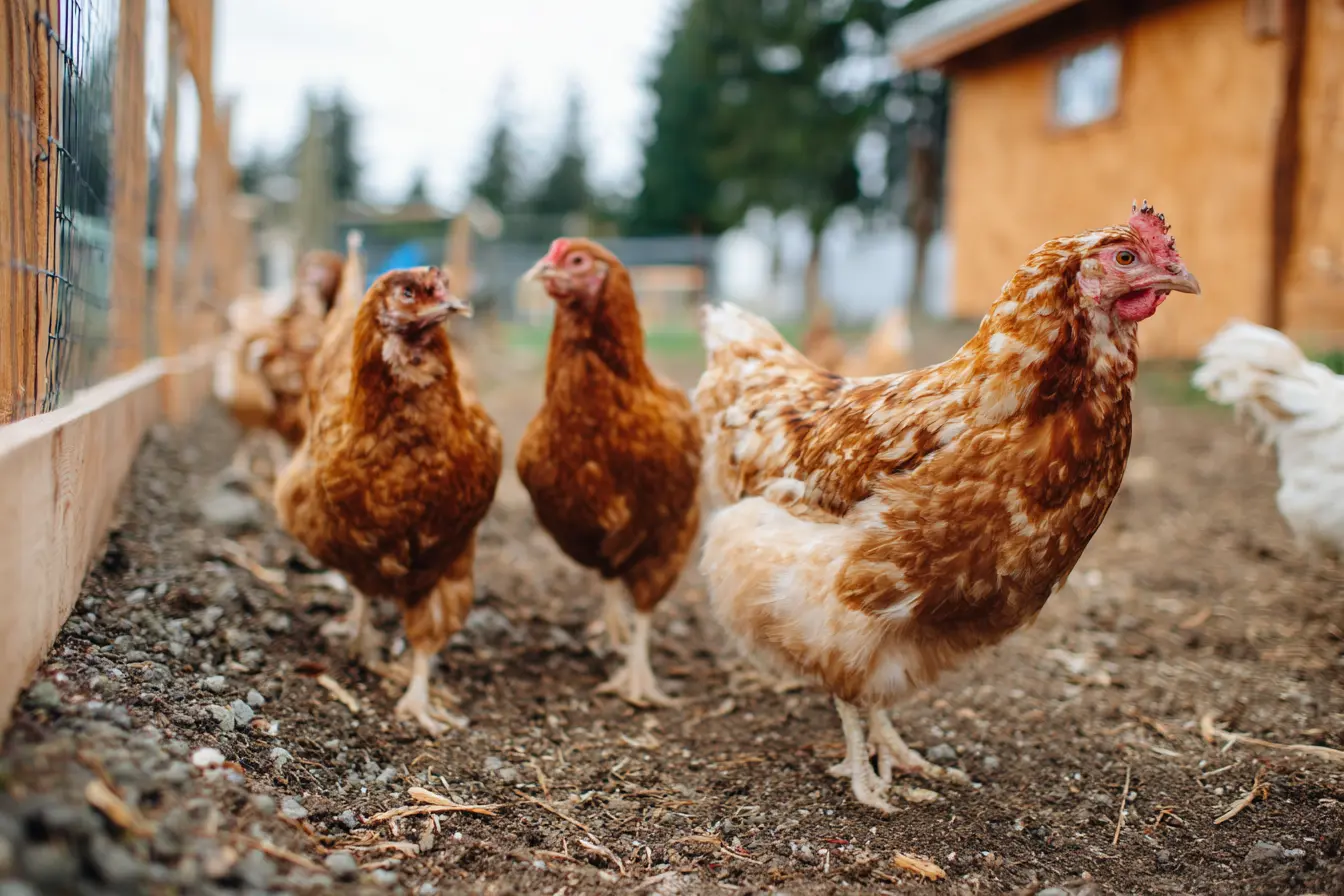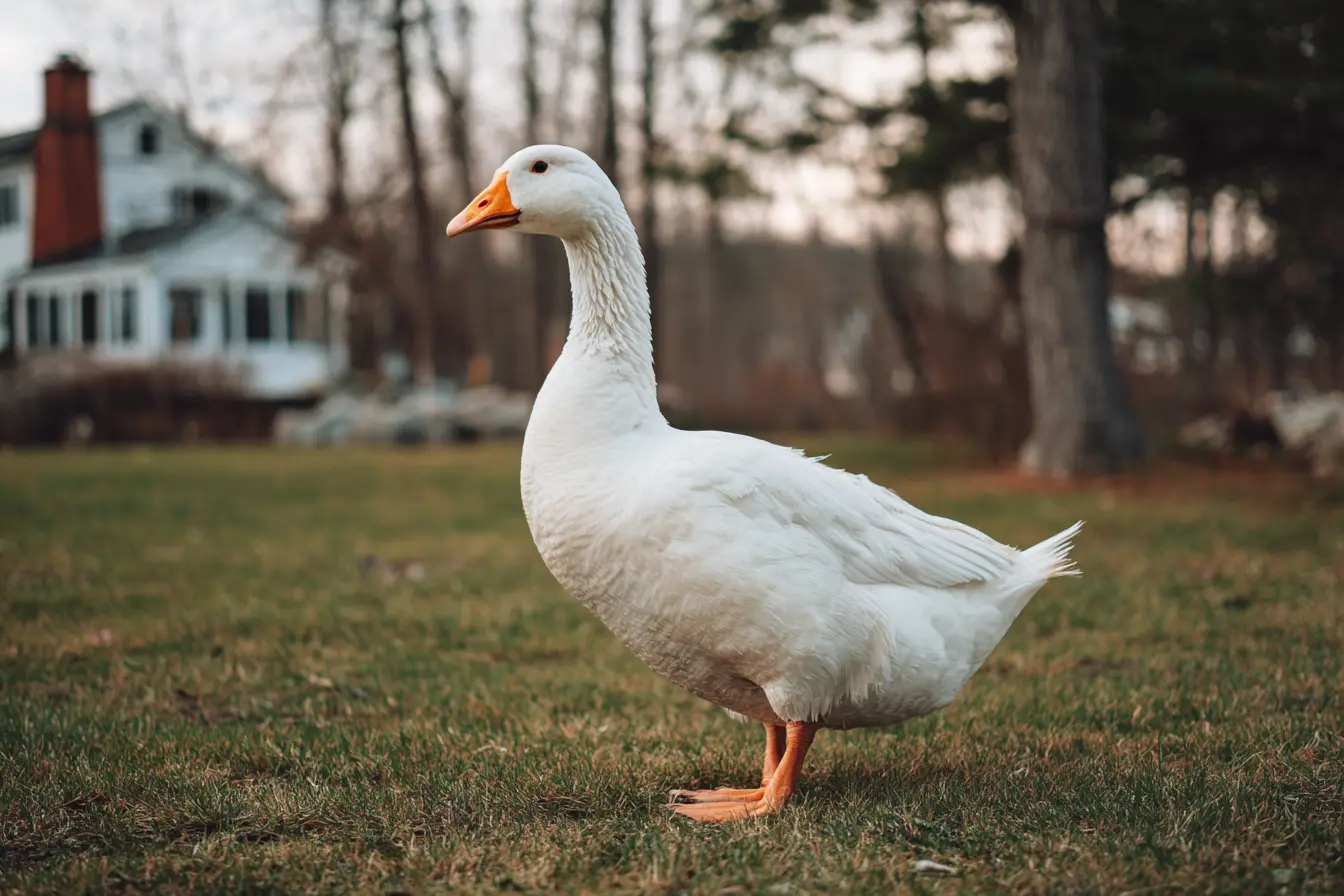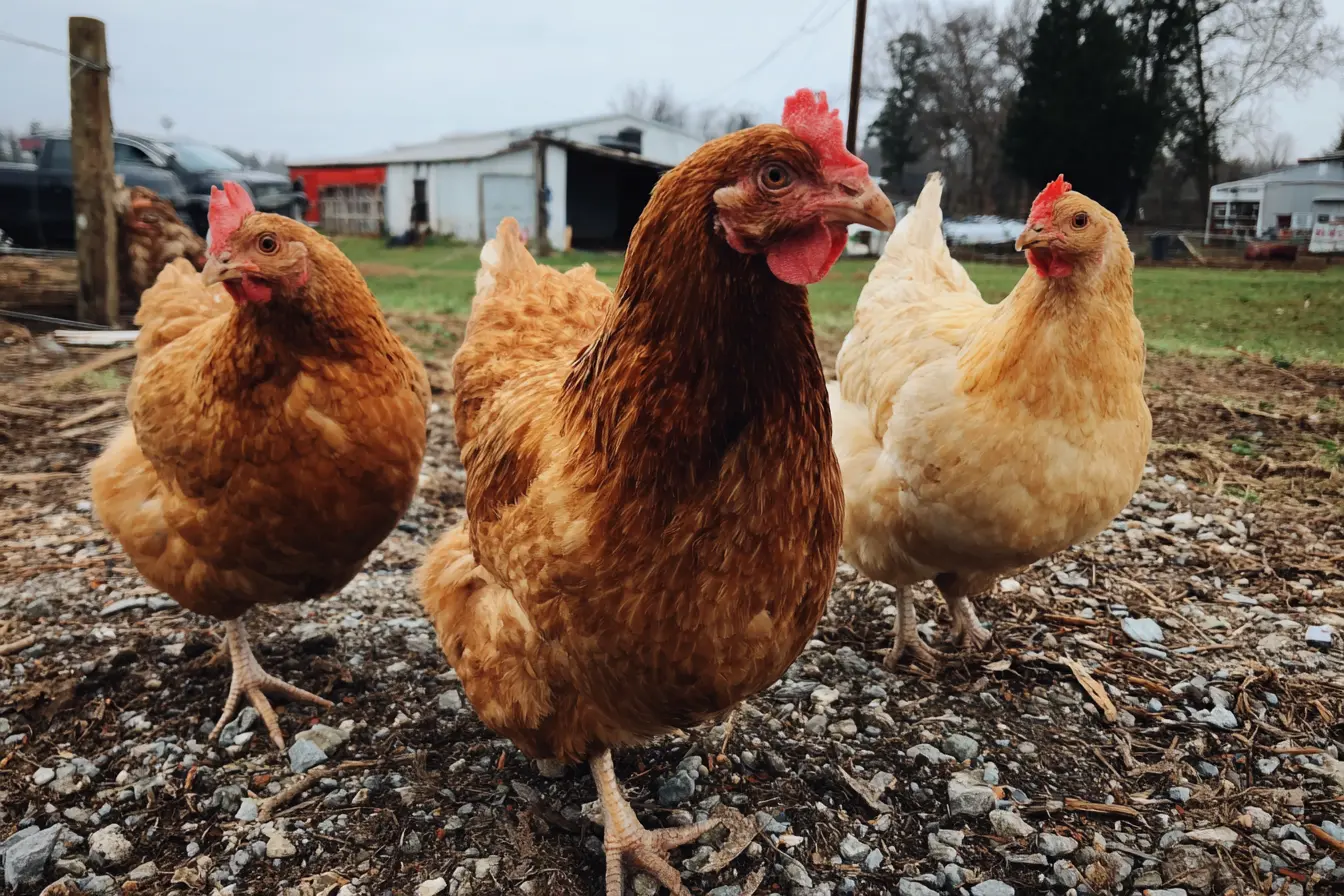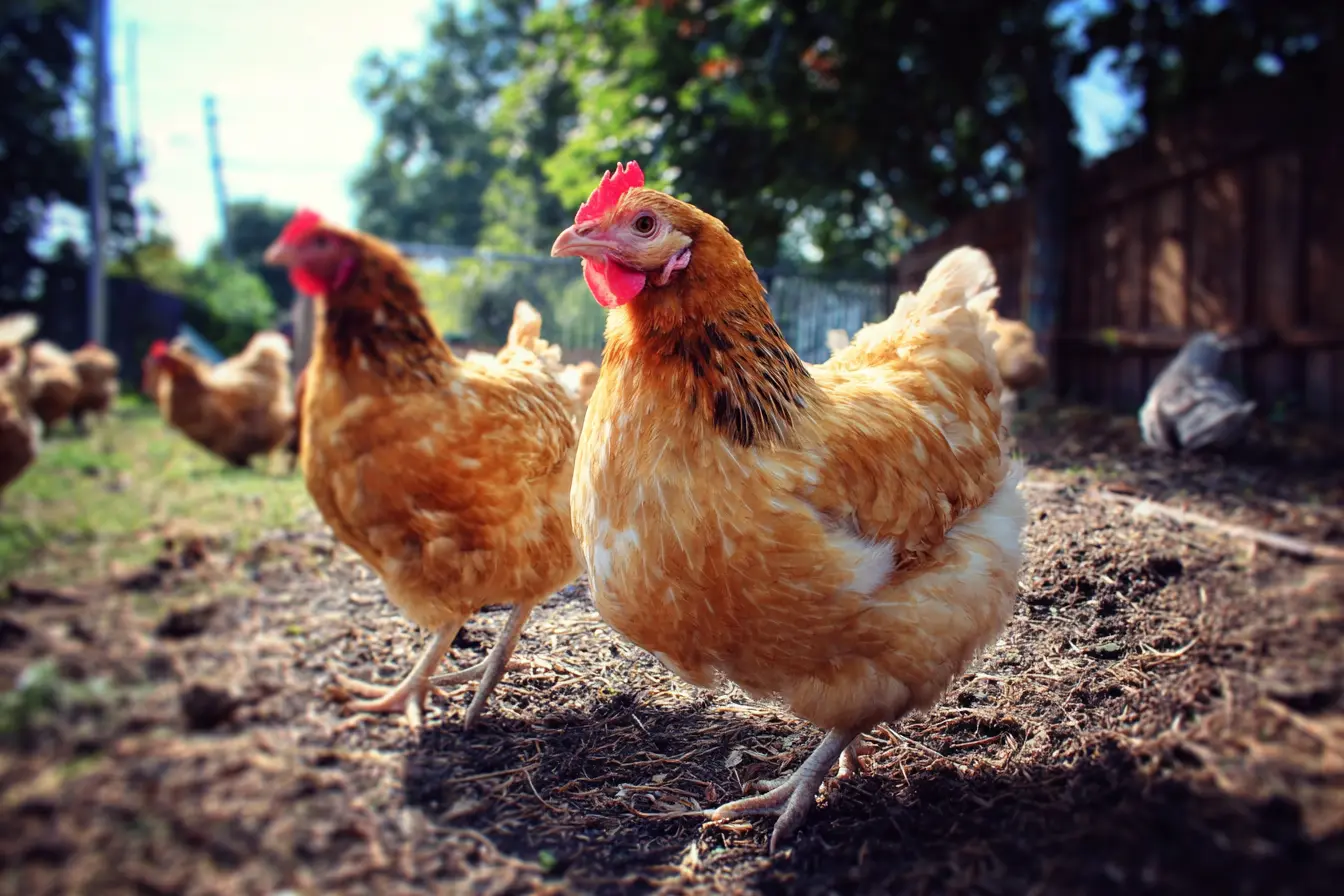
Understanding Different Types of Chicken Eggs and What They Mean
Raising chickens is a rewarding experience, not least because of the fresh, nutritious eggs they provide. However, not all eggs are created equal. The colour, size, shape, and even the internal appearance of an egg can tell you a lot about your hen's health, breed, age, and environment. In this post, we'll explore the different types of eggs you may find in your nesting boxes, what they indicate, and how to resolve common issues.
Eggshell Colour
Chickens lay eggs in a variety of colours, ranging from white and cream to brown, blue, and even green. The colour of an eggshell is determined entirely by the breed of the hen and is not an indicator of nutritional value or quality.
Common Egg Colours and Breeds
- White eggs: Typically laid by breeds such as Leghorns.
- Brown eggs: Common among Rhode Island Reds, Sussex, and Orpingtons.
- Blue eggs: Often produced by Araucanas and Cream Legbars.
- Green or olive eggs: Laid by hybrid breeds such as Olive Eggers.
Shell Texture and Shape
Eggshells should be smooth, strong, and uniform in shape. Irregularities can point to nutritional deficiencies, stress, or health issues. Below are common shell anomalies, what they mean, and how to address them.
Common Shell Anomalies and How to Resolve Them
Wrinkled or Corrugated Shells
Cause: Stress, ageing, or diseases like infectious bronchitis.
Resolution:
- Reduce environmental stress (e.g. predators, overcrowding, sudden temperature drops).
- Ensure vaccination against common poultry diseases.
- Provide a consistent routine and plenty of space.
Soft-Shelled or Shell-Less Eggs
Cause: Calcium deficiency, heat stress, or immature laying.
Resolution:
- Offer free-choice calcium (crushed oyster shell or limestone grit).
- Ensure vitamin D3 is present in feed to aid calcium absorption.
- Avoid feeding excessive treats that can dilute nutrient intake.
- Provide cool, shaded areas in hot weather.
Speckled Shells
Cause: Extra calcium deposits or stress.
Resolution:
- Review calcium supplementation—reduce if overdosing.
- Minimise stressors (handling, loud noises, sudden changes).
Flat-Sided Eggs
Cause: Two eggs entering the shell gland at once.
Resolution:
- Usually self-corrects over time.
- Ensure hens have enough space and access to food/water to reduce stress.
Bumpy or Rough Shells
Cause: Irregular calcium absorption or excess calcium.
Resolution:
- Check feed formulation for proper mineral balance.
- Supplement with a well-rounded layer feed if not already doing so.
Thin-Shelled Eggs
Cause: Calcium/vitamin D deficiency, parasites, or illness.
Resolution:
- Provide constant access to a calcium source.
- Deworm hens regularly.
- Ensure hens receive sunlight or a supplement for vitamin D3.
Misshapen Eggs
Cause: Ageing, stress, or previous reproductive damage.
Resolution:
- Give hens a break from laying if possible.
- Provide calm, predictable environments.
- Ensure good overall nutrition to support reproductive health.
Discoloured or Stained Shells
Cause: Faecal contamination or abnormal shell gland function.
Resolution:
- Clean nesting boxes daily and use fresh bedding.
- Provide enough nesting boxes to prevent crowding (1 box per 3-4 hens).
- Investigate any internal issues if shell colouration changes dramatically and frequently.
Size and Weight
The size of an egg typically increases as a hen matures.
- Small eggs from new layers are normal and will increase in size.
- Very large or inconsistent sizes may suggest stress or reproductive strain —ensure hens have rest periods, especially in winter or during moulting.
- Provide high-quality, age-appropriate feed with the correct protein and calcium balance.
Internal Egg Variations
What you see inside an egg can offer clues about your flock’s condition.
Yolk Colour
-
Pale yolk: Indicates lack of carotenoids in diet.
Resolution: Add dark leafy greens, marigold petals, or maize to the diet. -
Deep orange yolk: Sign of a rich, varied diet and free-range access—ideal.
-
Blood spots: Caused by burst vessels, common in young layers.
Resolution: No intervention needed unless frequent—then consider reducing handling and dietary stress. -
Meat spots: Tissue from the oviduct.
Resolution: Often genetic or stress-related. Cull from breeding lines if frequent.
Albumen (Egg White) Quality
- Thick, cloudy white: Fresh egg—no concern.
- Watery white: Age of hen or egg.
Resolution: Improve diet and collect eggs more frequently. - Discoloured whites (green/pink): Likely bacterial contamination.
Resolution: Discard eggs. Review coop hygiene, nesting cleanliness, and water source sanitation.
Double Yolkers and Other Oddities
Double yolkers are common and not usually concerning, especially in young hens.
Resolution
- No action needed unless frequent in mature hens—monitor for reproductive strain.
Other Egg Oddities
-
No-yolk eggs ('wind eggs'):
Cause: Young pullets just starting to lay.
Resolution: Ignore—part of normal development. -
Lash eggs or internal laying:
Cause: Reproductive tract infection like salpingitis.
Resolution: Isolate hen, consult a vet, and consider antibiotics or culling in severe cases.
Egg Quality and Freshness
Assessing freshness is key for safety and taste.
Float Test
- Sinks and lies flat: Very fresh.
- Sinks but stands upright: A few weeks old—still usable.
- Floats: Gas buildup from bacterial breakdown—discard.
Candle Testing
- Shine a bright light into the egg in a dark room to assess the air cell, shell quality, and contents.
Resolution Tips
- Store eggs with the pointed end down.
- Avoid washing eggs unless visibly dirty; use a dry brush or soft cloth.
- Collect eggs daily to maintain freshness and hygiene.
When to Be Concerned
While most egg oddities are harmless, you should act if:
- Egg anomalies are consistent across several hens.
- Eggs have persistent blood or faecal stains.
- Production drops suddenly or shells are regularly soft.
Resolution Checklist
- Check diet: Is it complete, balanced, and fresh?
- Check coop environment: Is it clean, well-ventilated, and stress-free?
- Inspect for illness: Are any hens lethargic, sneezing, or showing other symptoms?
- Consult a poultry vet if the issue persists or spreads.
Conclusion
Eggs are more than just breakfast—they're a window into the wellbeing of your flock. By understanding what different egg characteristics mean and how to resolve common issues, you can maintain the health, happiness, and productivity of your hens.
Keep records, stay observant, provide a nutritious diet, and create a stress-free environment. Your chickens (and your omelettes) will thank you.
Vets near you
Speciality vets
- Aquatics vet specialists
- Birds vet specialists
- Camelids vet specialists
- Cats vet specialists
- Cattle vet specialists
- Deer vet specialists
- Dogs vet specialists
- Equines vet specialists
- Exotic vet specialists
- Goats vet specialists
- Pigs vet specialists
- Poultry vet specialists
- Sheep vet specialists
- Small Mammals vet specialists
- Wild vet specialists



